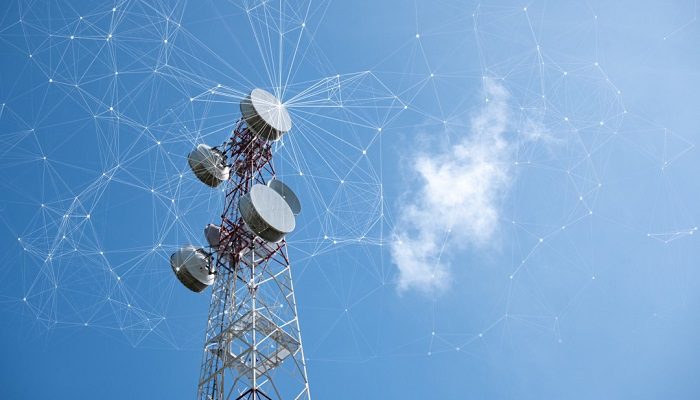In today’s business as well as technological landscape, it is not easy to envision a world where the workforce stays disconnected when it comes to sustainability. With the rising constraints on natural resources, geopolitical challenges, as well as unpredictable supply chain dynamics, the urgent need to achieve net-zero goals has never been more evident in the eyes of consumers. Moreover, organizations that aim to ensure their long-term survival as well as success go on to acknowledge that prioritizing net-zero ambitions is of utmost importance.
Leaders across various industries are increasingly experiencing an increased amount of pressure to come up with a comprehensive worldwide sustainability strategy that should not only address the climate implications but at the same time take into account other social as well as environmental factors that go on to contribute to the promotion of an enhanced environmentally friendly future.
It is well to be noted that organizations in the high-tech as well as telecom sectors are at present evaluating ways to enhance the sustainability of their product lifecycle by way of redesigning. Although there are established solutions such as using sustainable materials, enhancing manufacturing processes, designing when it comes to disassembly and recycling, prolonging product lifespans, and promoting product reuse as well as remanufacturing, creating a comprehensive sustainability roadmap does not happen to be as straightforward as it seems.
To effectively take into cognizance the natural resource limitations and advance sustainability goals, organizations should go on to prioritize the establishment of circularity.
Making use of The Circular Economy
A circular economy happens to be the direct opposite of a linear economy. While a linear economy looks into the three-step process of adding value when it comes to raw materials, using products, and then thereafter discarding them, a circular economy looks to preserve value from the used products before discarding them. This is done by repairing, sharing, reselling, repurposing, remanufacturing, as well as recycling these products once they have been of use in terms of their commercial purpose.
As per the research, a mere 18% of the electronic waste that was generated worldwide in 2019 was reported to have been accumulated and then recycled in an effective manner. In the telecommunications and high-technology sectors, enterprises depend on various essential resources as well as minerals. This highlights the existence of numerous business use cases that encourage the creation of a resilient, circular economy.
Chief Experience Officers go on to play a crucial role in various aspects when it comes to product development. One of their utmost responsibilities is to lessen the resource consumption during the product development stage. Additionally, CXOs also focus on prolonging the lifespan and usage of products. They go on to achieve this by repurposing components and materials from used products, which not only helps retain their value but at the same time enables the creation of new products. Moreover, organizations have the opportunity to take out value from the components and materials of discarded products and also incorporate them back into the production as well as the commercial cycle. Telecommunications providers and high-tech organizations have the opportunity to transform their business models by offering extended subscriptions or as-a-service options. These new models come with significant sustainability benefits.
However, manufacturing is at the heart when it comes to circularity. To optimize manufacturing operations, it is imperative to use energy-efficient equipment, which not only helps in reducing emissions but also aids in the restoration of used water. Designing products to streamline disassembly not only helps enable recycling but at the same time facilitates easy serviceability, thereby extending product lifespans by way of refurbishment. By leveraging technologies such as AI and ML, one can unlock innovation when it comes to packaging, transportation, as well as logistics, which in turn helps to decrease waste. Including circularity when it comes to manufacturing is a wise investment for leaders who look to develop their sustainability roadmaps.
Moving The Needle
When it comes to the enterprise level, it is pretty generic for the organization’s sustainability vision to not be effectively translated into departmental goals. Strong leadership happens to be crucial for the success of any sustainability journey.
Leaders play a crucial role in translating the vision of the CEO into steps that are actionable within their respective departments, depending when it comes to their job function. Executive leadership should create individual plans of action when it comes to their respective departments, outlining how each department will go on to contribute to the broader vision. Leaders can utilize these roadmaps to begin various programs that need to be managed effectively in order to demonstrate progress towards organizational aims.
Department heads should be pushing to allocate time, resources, as well as effort towards educating their teams when it comes to sustainability and ensuring the successful implementation of these programs. It is important for this to be authentic and tailored to each department so that the entire workforce gets to witness a strong commitment from senior management. When leaders prioritize sustainability along with circularity as their main objective, the organization will align itself accordingly.
Apart from the outlined sustainability goals, department heads must also, to the point communicate a vision that takes into account the resources that are available and employs robust methods to achieve these goals. Organizations need to take into account the strategic levers that can be utilized within their teams, which include incorporating eco-design practices when developing new products, coordinating activities to integrate both forward as well as reverse logistics, implementing sustainable procurement methodologies, as well as adopting digital solutions to ensure traceability, insurability, and cost competitiveness. The secret to success in achieving sustainability goals lies in encouraging strong collaboration across the entire organization, which is crucial in order to make significant progress and also drive positive change.
It is no longer an option for entities to distinguish business from sustainability. Enterprises must develop strategic roadmaps so as to make their net zero goals a reality due to the finite nature of the earth’s resources and the rising demand from consumers, governments, as well as leaders.
That said, achieving sustainability is not an overnight process, and executing these strategies becomes more manageable when every worker, including suppliers, gets to have an adequate training and understands the importance of putting forth climate action initiatives across the entire enterprise.





















